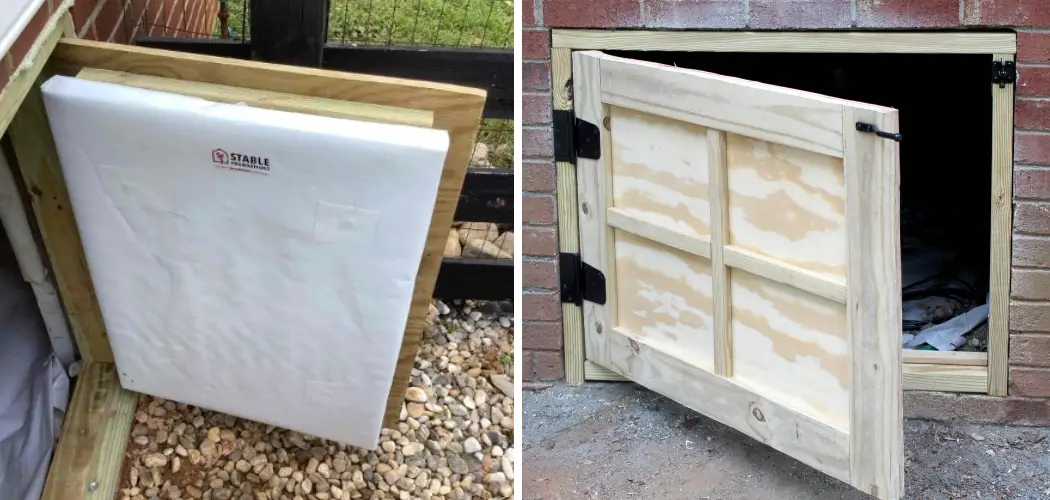Crawl spaces are notoriously difficult to keep sealed, as they are often filled with dampness, dust, and debris. Sealing your crawl space doors is important to maintaining the integrity of your home’s foundation and preventing pests from entering.
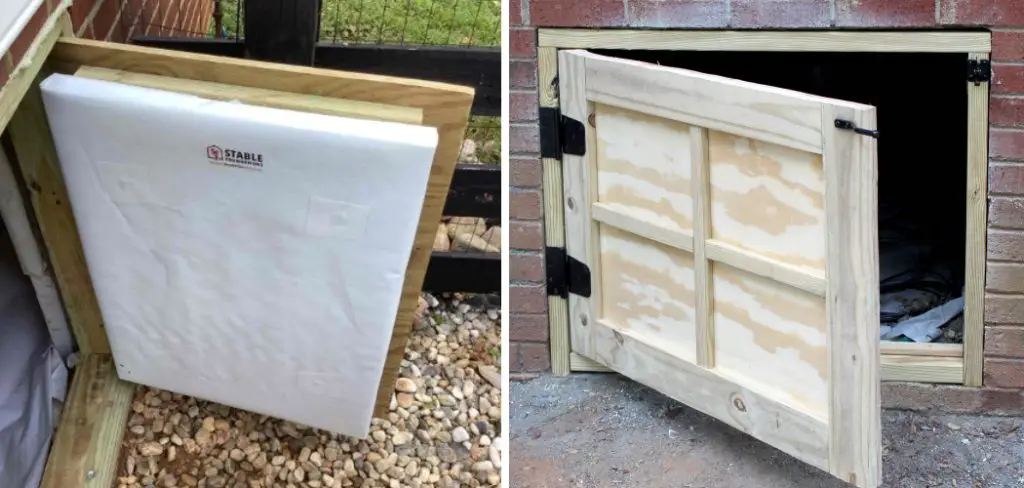
Properly sealing a crawl space door can also reduce energy costs by helping to ensure that conditioned air from the living space does not escape into the crawl space. Sealing a crawl space door is relatively simple and can be done using a few basic materials.
The primary advantage of sealing a crawl space door is keeping air out of the area. The sealed door will help to maintain an even temperature throughout the home, reduce energy costs, and prevent moisture from entering the living space. It will also provide extra protection against pests, rodents, and other unwanted intruders. In this blog post, You will learn in detail how to seal crawl space door.
Materials You Will Need
- Caulk and caulk gun
- Weatherstripping
- Foam insulation
- Nails or screws
- Hammer or screwdriver
- Utility knife
- Parchment paper
- Tape measure
- Pencil or marker
- Safety glasses/goggles
Step-by-Step Processes for How to Seal Crawl Space Door
Step 1: Inspect Your Crawl Space Door
Before you start sealing your crawl space door, take some time to inspect the door and the surrounding area. Look for any damage or wear and tear that may need to be repaired before you can seal the door effectively. In addition, check to make sure there is no water leakage around the door frame.
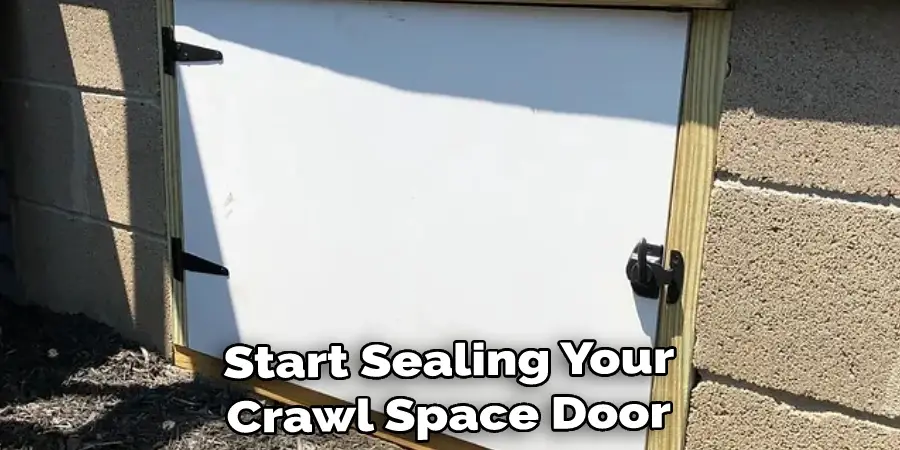
Step 2: Prepare the Doorframe
You will need to make sure that the door frame is clean, dry, and free from debris. Use a putty knife or wire brush to remove any old paint or caulk from the door frame. This will help ensure an effective seal when you apply your new sealant.
Step 3: Clean the Doorframe
Wipe down the doorframe using a damp cloth and mild detergent to remove any dirt or residue. This will help ensure that the new sealant adheres properly when it is applied. You need to measure the door frame’s width, length, and depth. This information will help you determine the amount of sealant you need for your project.
Step 4: Purchase the Right Sealant
A variety of sealants are available on the market, so make sure you purchase one specifically designed for sealing door frames. A silicone-based caulk or foam insulation is usually recommended as it will create a strong, waterproof seal. Before applying the sealant, make sure to read the manufacturer’s instructions on how to prepare and apply the product.
Step 5: Apply the Sealant
Using a caulking gun, begin at one end of your door frame and apply the sealant in a continuous line. You want to ensure that the sealant is applied evenly and that there are no gaps or air pockets left behind. Once you have finished applying the sealant, it’s important to smooth out any excess with a damp cloth or putty knife. This will help ensure an effective seal and also make it look neat.
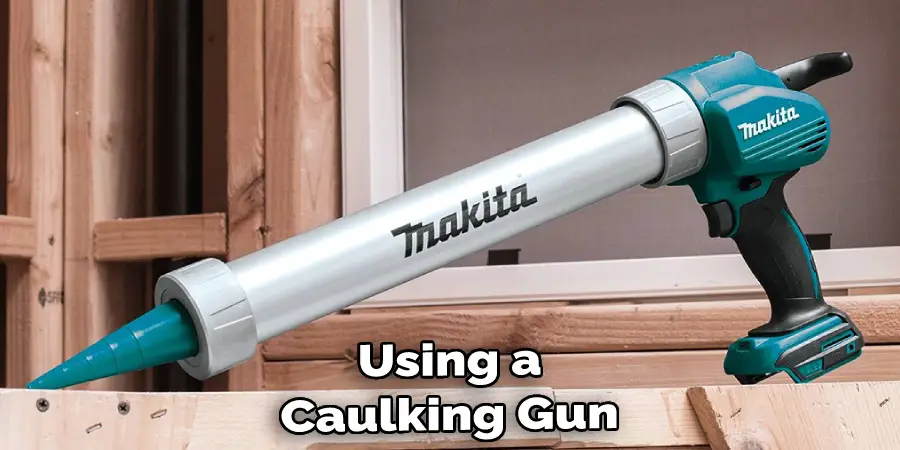
Step 6: Allow the Sealant to Cure
It’s important to allow the sealant to dry completely before reusing your crawl space door. Most sealants require at least 24 hours of curing time, so make sure to check the manufacturer’s instructions for specific curing times.
Once your sealant has cured, it’s a good idea to test it to ensure that it is waterproof and airtight. Run water over the door frame and check for leaks or gaps. If everything looks good, your crawl space door is now sealed effectively and ready for use.
Now that you know the steps on how to seal a crawl space door, you can help protect your home from moisture, pests, and other potential problems.
Safety Tips for How to Seal Crawl Space Door
- Open and close the door with caution. Be aware of any exposed nails or screws, as they can be sharp and cause injury.
- Wear protective eyewear while sealing your crawl space door to avoid any from getting into your eyes and causing irritation or damage.
- Always make sure that you have adequate ventilation when sealing your crawl space door.
- Use a dust mask to prevent you from inhaling any of the particles from the sealant or insulation.
- Check for any signs of moisture, mold, or rot before sealing and take steps to address these issues if necessary.
- Make sure that all materials used are rated for outdoor use, and if necessary, have them tested to ensure they will perform as expected.
- After sealing the crawl space door, leave it open for a few days to allow any trapped moisture or fumes to dissipate before closing it completely. Inspect the door frequently while it is open to make sure that there are no signs of air leaks.
These safety tips should be followed when sealing a crawl space door to ensure that the seal is effective and will last for years to come. With the proper precautions and materials, you can ensure that your crawl space stays dry and safe.
Is There an Easy Way to Determine What Type of Door is Best for Your Needs?
When it comes to selecting the right door for your crawl space, there are many factors that come into play. For example, climate, budget, materials available, and type of insulation needed should all be taken into consideration.
Generally speaking, a steel or aluminum door is best for moderate climates as they provide adequate insulation and durability. Fiberglass doors are a good option for warmer climates due to their high insulation values and resistance to moisture. Vinyl and wood doors can provide excellent insulation benefits but are more susceptible to moisture damage over time.
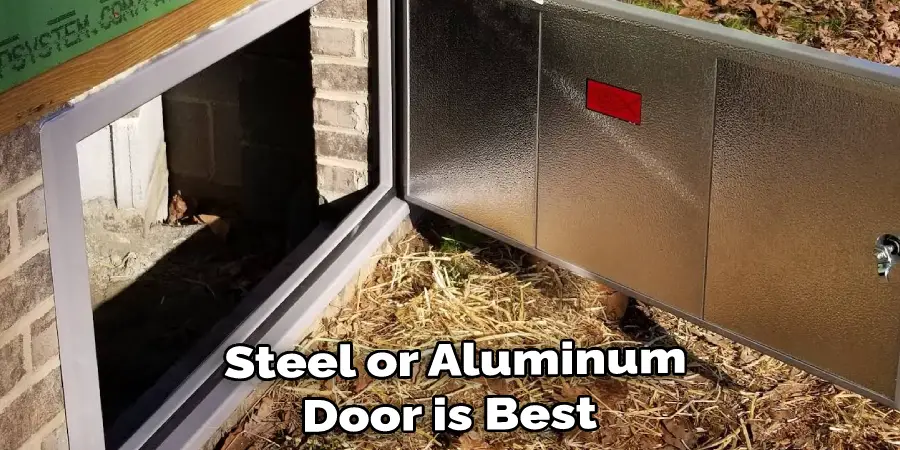
Once you’ve determined the best material for your door, the next step is to ensure a tight seal between the frame of the door and the wall of your crawl space. This can be done by caulking and weatherstripping the frame and ensuring the door is properly hung. A good moisture barrier should also be placed around the perimeter of the frame to prevent issues with mold and mildew.
Should You Use Insulation Around the Sides and Top of the Door?
Adding insulation around the sides and top of a crawl space door is not necessary. However, if you live in an area where there are extreme temperatures or high humidity levels, insulating the door can help keep your crawl space warm in cold weather and cool in hot weather.
When selecting insulation for this purpose, use one that is rated to withstand the humidity levels in your area. Ensure that any insulation you install extends around the sides and top of the door without leaving any gaps or openings. You may also want to consider using a vapor barrier with your insulation if necessary.
In addition to insulating the area around the door, weatherstripping can help prevent cold air from entering the crawl space. Weatherstripping should be installed around the entire perimeter of the door frame and can help reduce drafts and keep energy costs low.
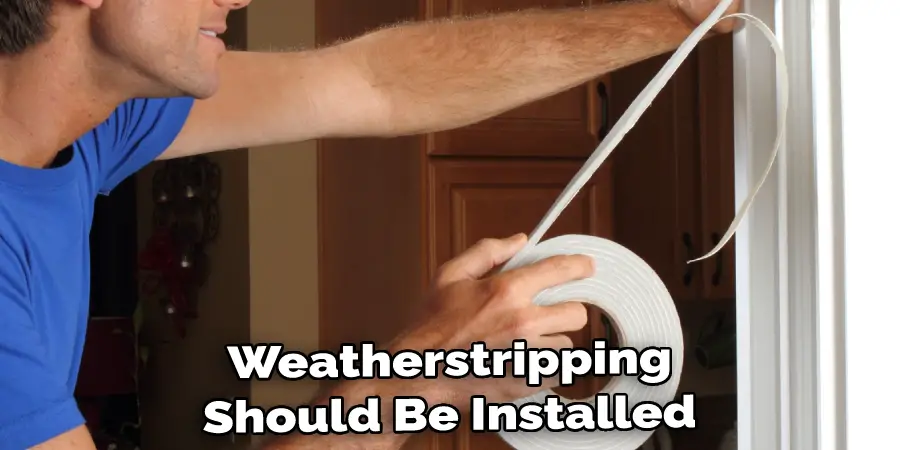
Finally, caulking gaps or cracks around the door frame is also important in effectively sealing off your crawl space. Caulk can provide a good seal, making cold air difficult to enter the crawl space. Ensure you use a quality caulk rated for outdoor weather and temperature changes. After applying the caulk, allow it to dry thoroughly before closing the door.
Is It Important to Make Sure the Door is Securely Mounted to Ensure a Tight Seal?
Yes, it is important to ensure the crawl space door is securely mounted to ensure a tight seal. Properly mounted doors will provide an airtight barrier between the inside and outside of your home. This airtight seal will help prevent moisture, heat, and other elements from entering or escaping the crawl space. Additionally, this will help keep pests, dirt, debris, and other contaminants from entering the crawl space.
When preparing to mount a crawl space door, make sure all hardware is included and in good condition. Utilize exterior grade or stainless steel screws and bolts long enough to penetrate through the door frame into the wall framing behind it. Make sure to use the manufacturer’s instruction manual to install the door properly. After installing, periodically inspect and maintain the crawl space door to ensure it is securely mounted and well-sealed.
How Frequently Should You Check the Seal of the Door to Make Sure It is Still Airtight?
You have a door that seals your crawl space, it is important to check the seal regularly. You should visually inspect the seal of the door every few months. If you see any signs of wear and tear, repair or replace them immediately.
Additionally, make sure to test that the seal is still airtight annually by doing a pressure test. To pressure test, close the door and turn on a fan for several minutes to see if any air is leaking in or out of the crawl space. If you detect any draughts, use weatherstripping to seal the door better.
In addition to checking and replacing the seal of your crawl space door, it is also important to check for any gaps and cracks in the door frame If you find small gaps, use expanding foam caulk to fill them.
larger gaps, consider applying more weatherstripping or replacing the entire door if necessary. Regularly checking and maintaining the seal of your crawl space will ensure that it will remain airtight and protect your home from pests, moisture, mold, and mildew.
Conclusion
In conclusion, sealing a crawl space door is important to keeping your home comfortable and energy-efficient. By following the simple steps outlined above, you can easily create an airtight seal that will help save money on your energy bill and maintain indoor air quality.
Additionally, it’s also important to remember to check the condition of your crawl space door regularly to ensure that it’s still properly sealed. I hope this article has been beneficial for learning how to seal crawl space door. Make Sure the precautionary measures are followed chronologically.

